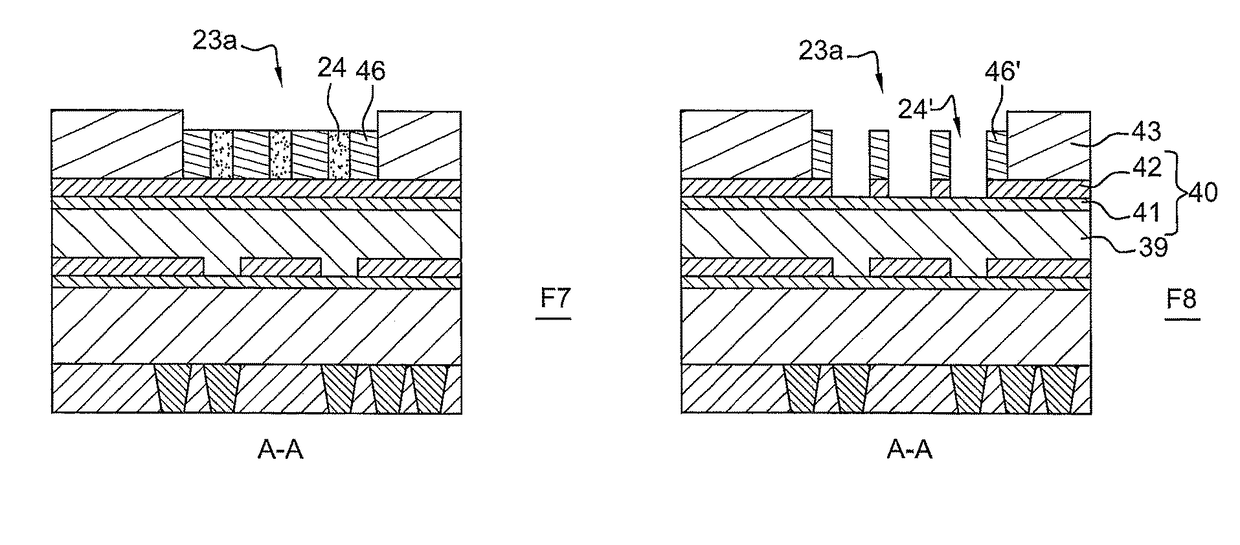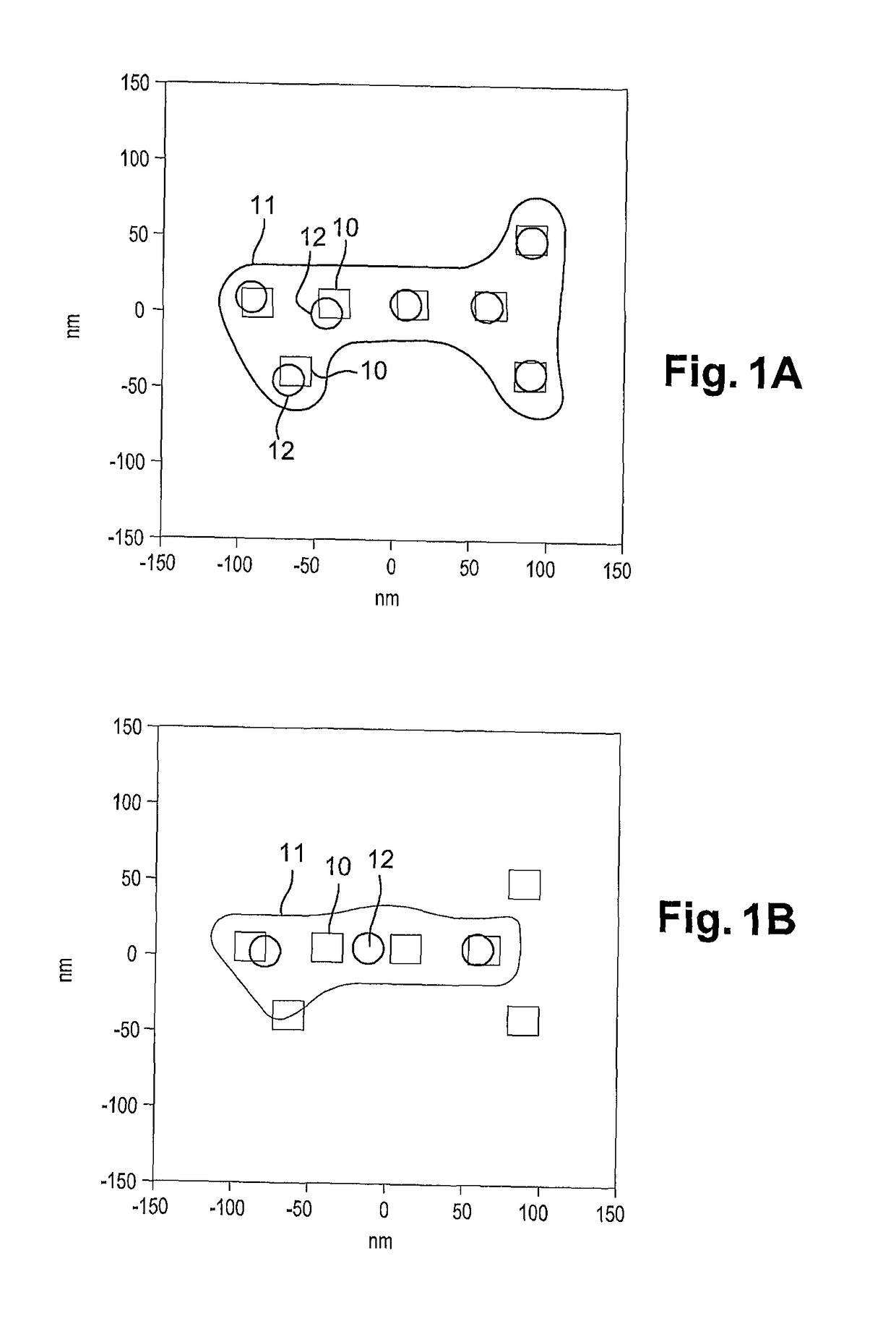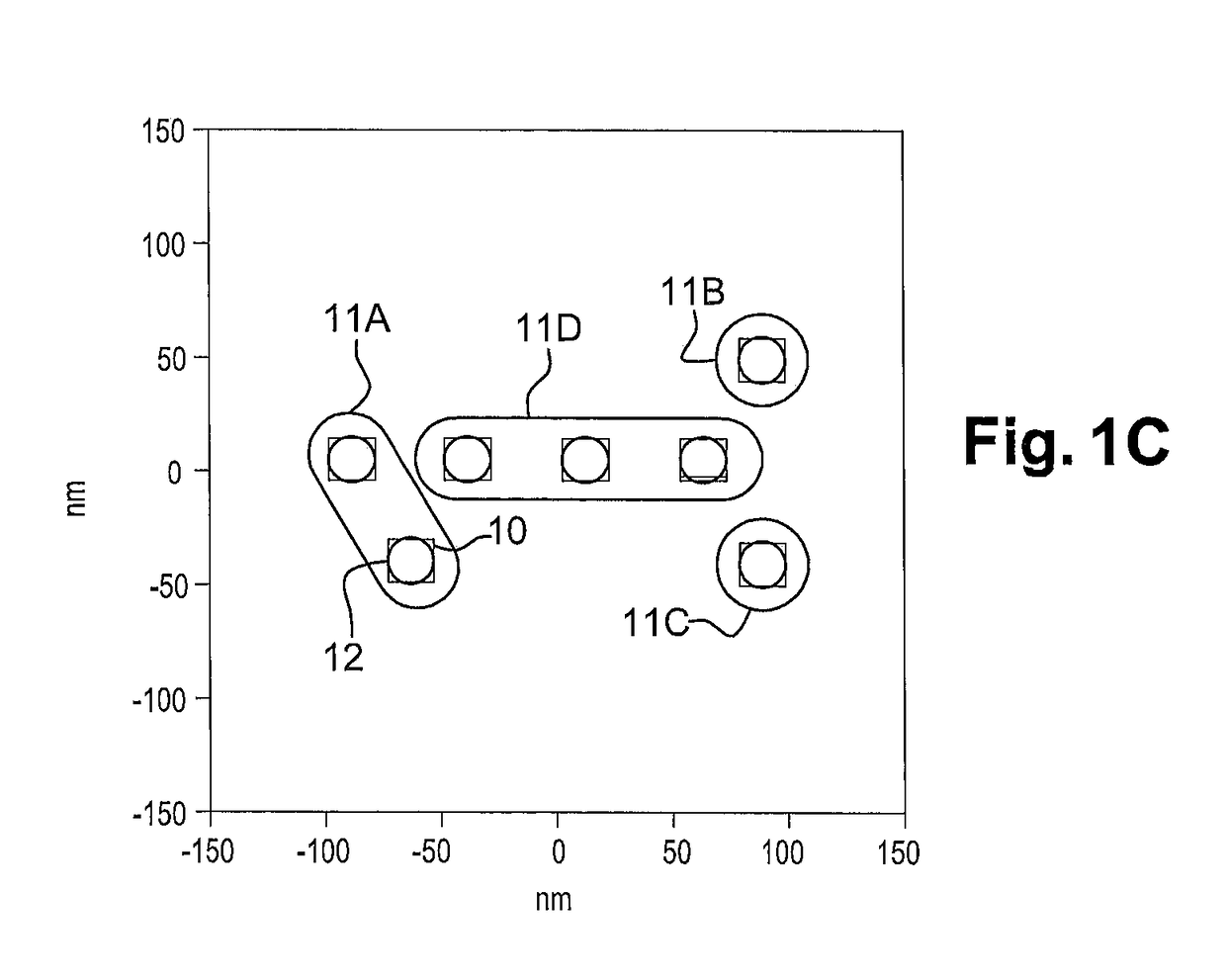Method for making patterns by self-assembly of block copolymers
a technology of block copolymer and self-assembly, which is applied in the direction of basic electric elements, semiconductor/solid-state device manufacturing, electrical equipment, etc., can solve the problems of long and expensive methods, limited resolution of exposure tools, and problems such as alignment between patterns, and achieve great freedom in positioning contacts
- Summary
- Abstract
- Description
- Claims
- Application Information
AI Technical Summary
Benefits of technology
Problems solved by technology
Method used
Image
Examples
Embodiment Construction
[0046]A method of directed self-assembly (DSA) of block polymers is described hereafter. This method allows to print, in a single step, a high density of patterns on the surface of a substrate. This method is advantageously used to form the contact holes of an integrated circuit from cylindrical block copolymers.
[0047]The method applies more particularly to contacts that are separated from each other by a distance less than the minimum resolution pitch by photolithography. For example, with an immersion photolithography tool of wavelength equal to 193 nm, the minimum pitch between two patterns is around 88 nm. Consequently, all the contacts having a neighbour spaced less than 88 nm away are going to be grouped together in order to be printed in the same guide.
[0048]This method can also apply to contact holes not having an immediate neighbour, but the dimensions of which are such that they cannot be resolved by photolithography or instead in order to improve the dimensional control o...
PUM
 Login to View More
Login to View More Abstract
Description
Claims
Application Information
 Login to View More
Login to View More - R&D
- Intellectual Property
- Life Sciences
- Materials
- Tech Scout
- Unparalleled Data Quality
- Higher Quality Content
- 60% Fewer Hallucinations
Browse by: Latest US Patents, China's latest patents, Technical Efficacy Thesaurus, Application Domain, Technology Topic, Popular Technical Reports.
© 2025 PatSnap. All rights reserved.Legal|Privacy policy|Modern Slavery Act Transparency Statement|Sitemap|About US| Contact US: help@patsnap.com



